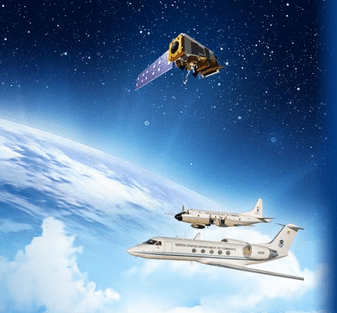 |
| NOAA will supplement its weather forecasting capabilities using information pulled from aircraft equipped with Panasonic Avionics tech. Photo: NOAA |
[Avionics Today 11-10-2015] Panasonic Avionics Corporation has entered into an agreement to supply global aircraft weather data to the National Oceanic and Atmospheric Administration (NOAA) through the National Mesonet Program. Panasonic’s atmospheric observations will improve forecasts from the regional and global weather models run by the National Weather Service.
“We are very excited to continue our long-term relationship with NOAA to improve the quality of weather forecasting in the United States. The distinct advantages of our aviation-based observational data will enhance NOAA’s mission of protecting life and property,” said Neil Jacobs, chief atmospheric scientist for Panasonic Weather Solutions.
Tropospheric Airborne Meteorological Data Reporting (TAMDAR) data provides observations of wind, temperature, and moisture every five seconds as TAMDAR-equipped aircraft descend and ascend at nearly 300 airports across North America. These take offs and landings provide more than 1,500 vertical profiles daily in the vicinity of these airports, supplementing the vertical profiles observed with National Weather Service balloons. TAMDAR also provide about 3,500 profiles each day from several hundred additional airports located in East Asia, the Pacific, and Europe.
“The National Weather Service has long recognized the utility of TAMDAR data for analysis and numerical forecast models and I’m pleased about this path forward to incorporate these data in our day-to-day operations,” said Louis Uccellini, director of NOAA’s National Weather Service.